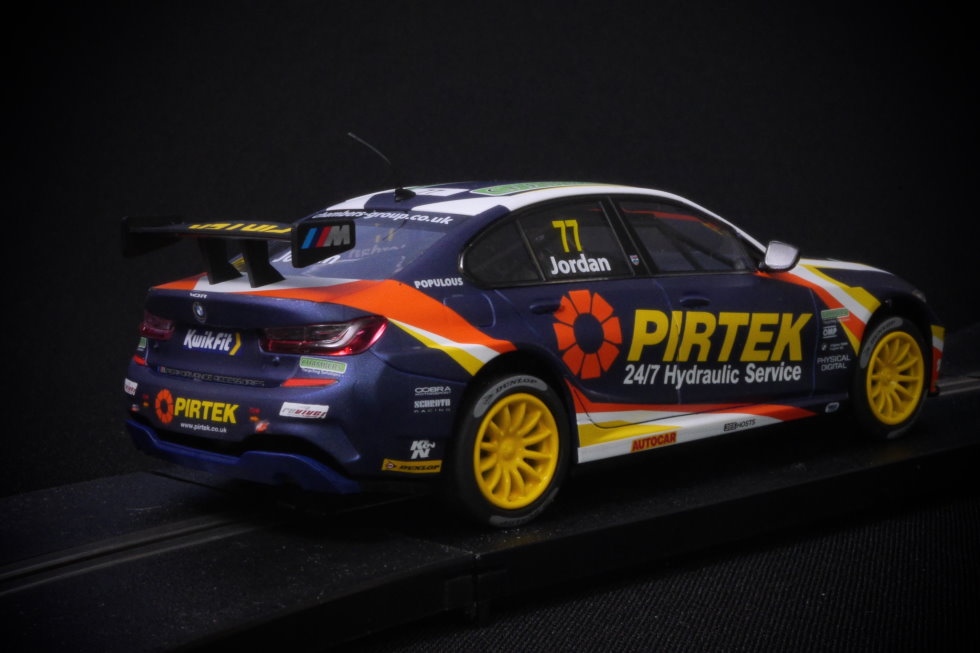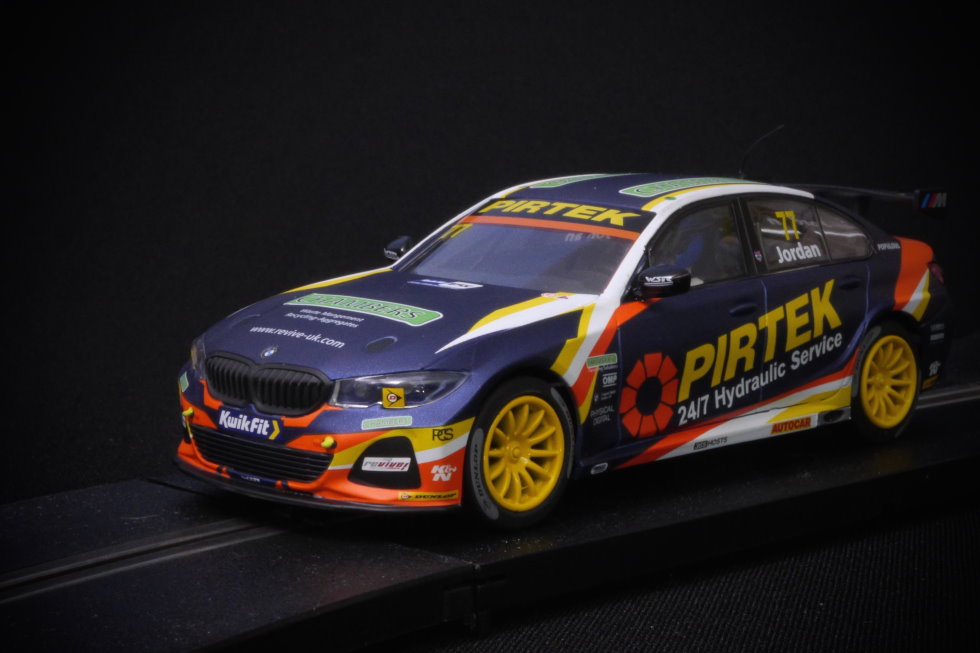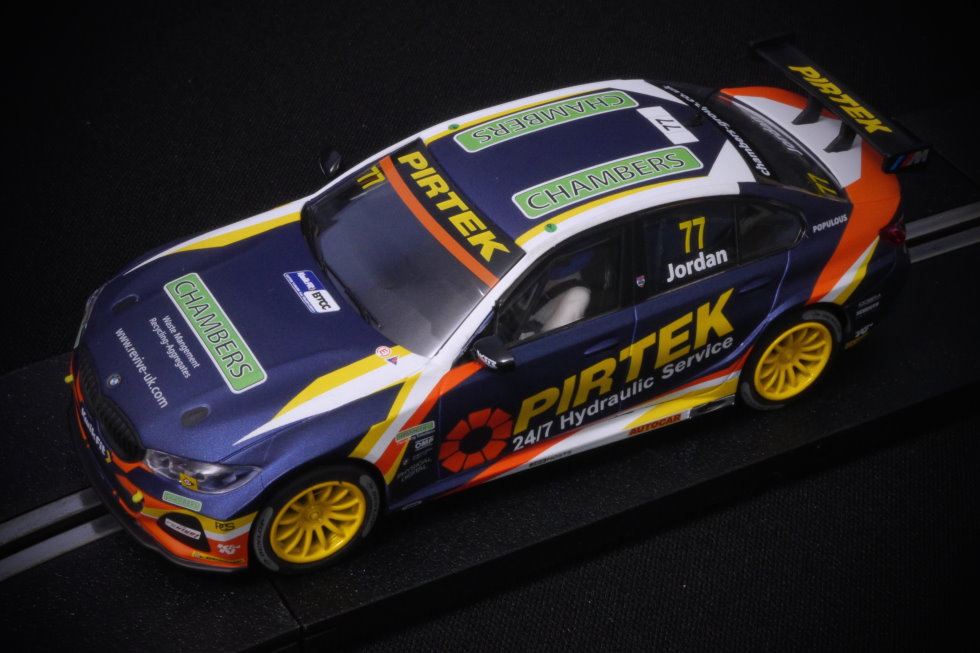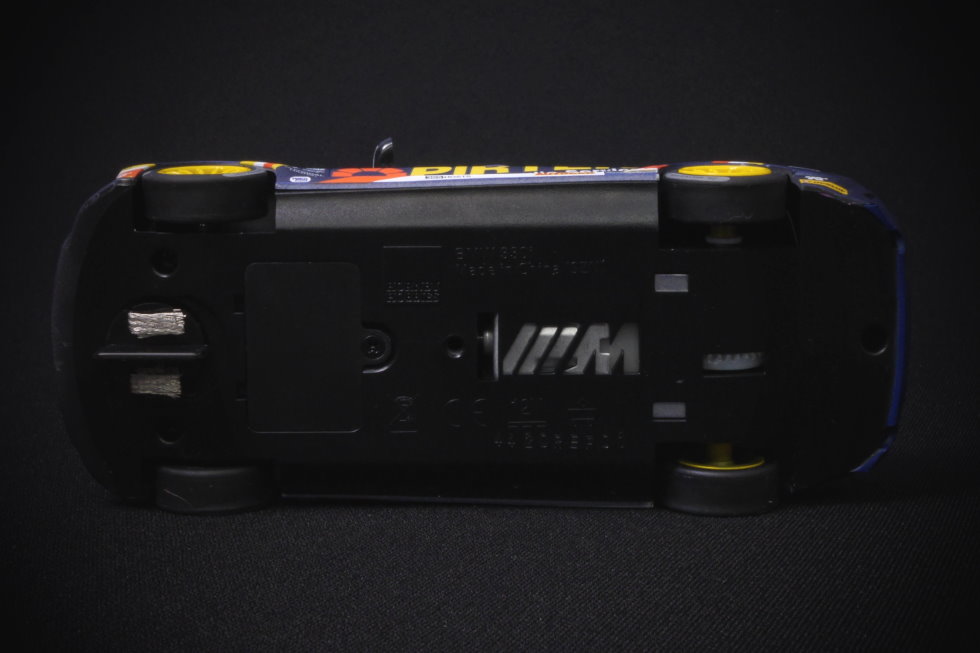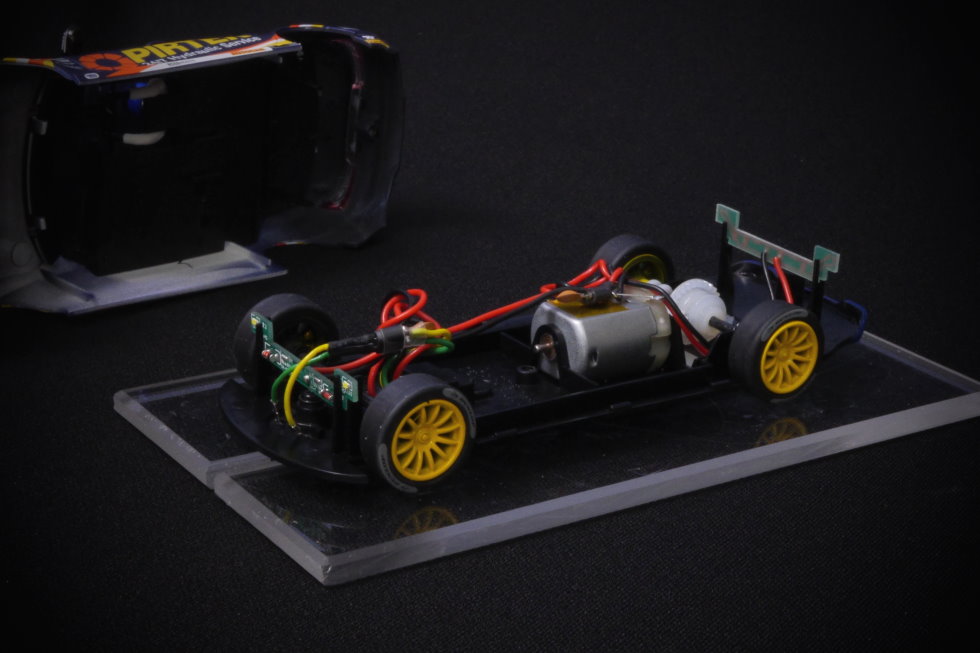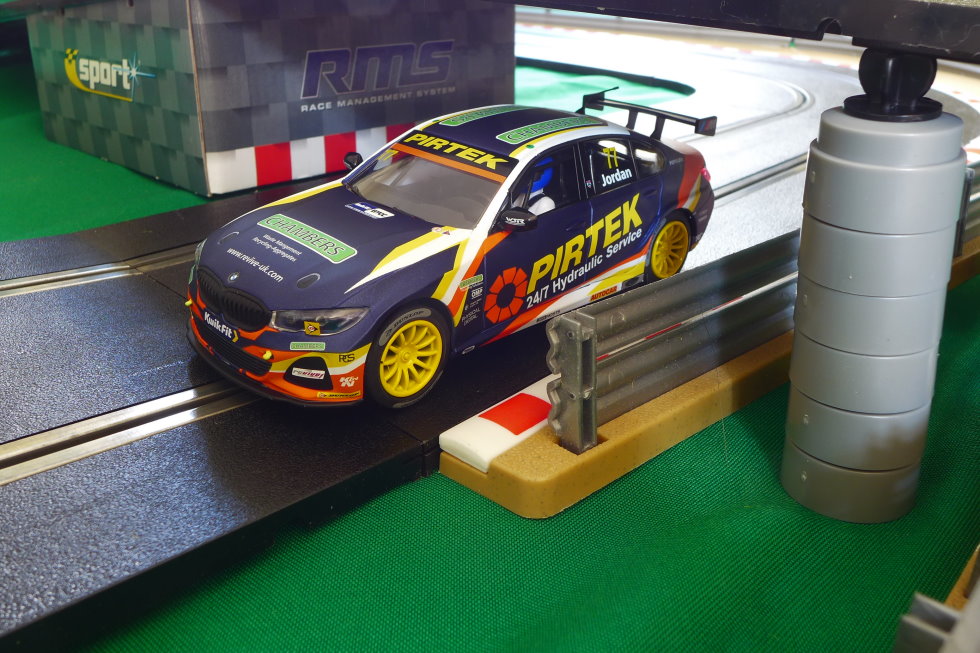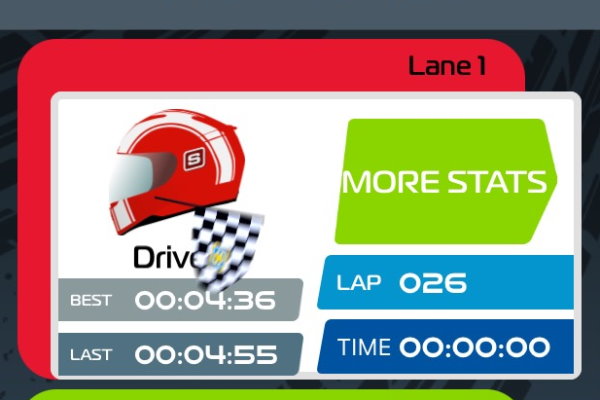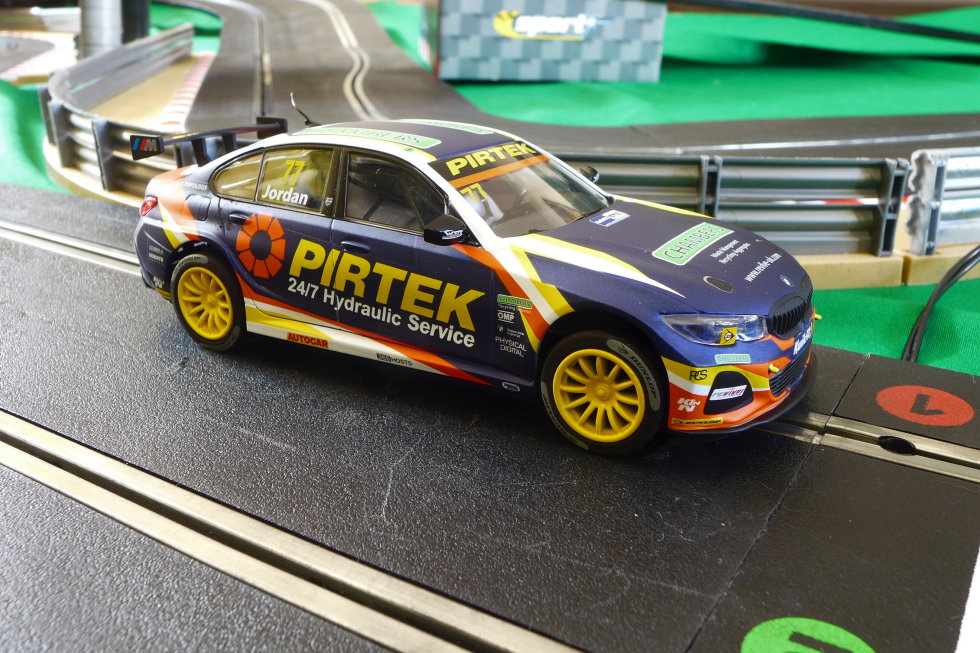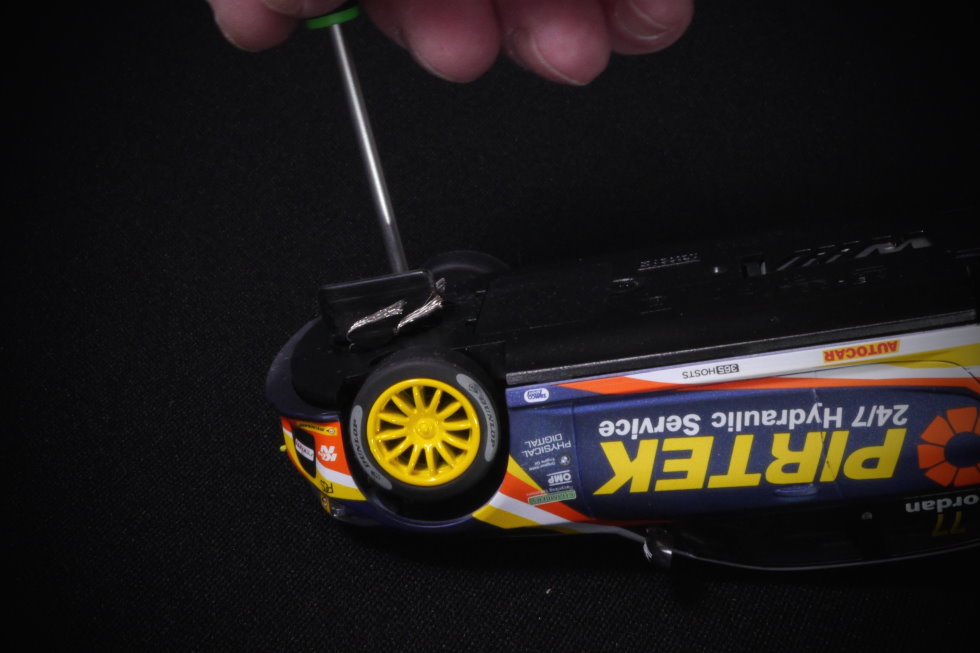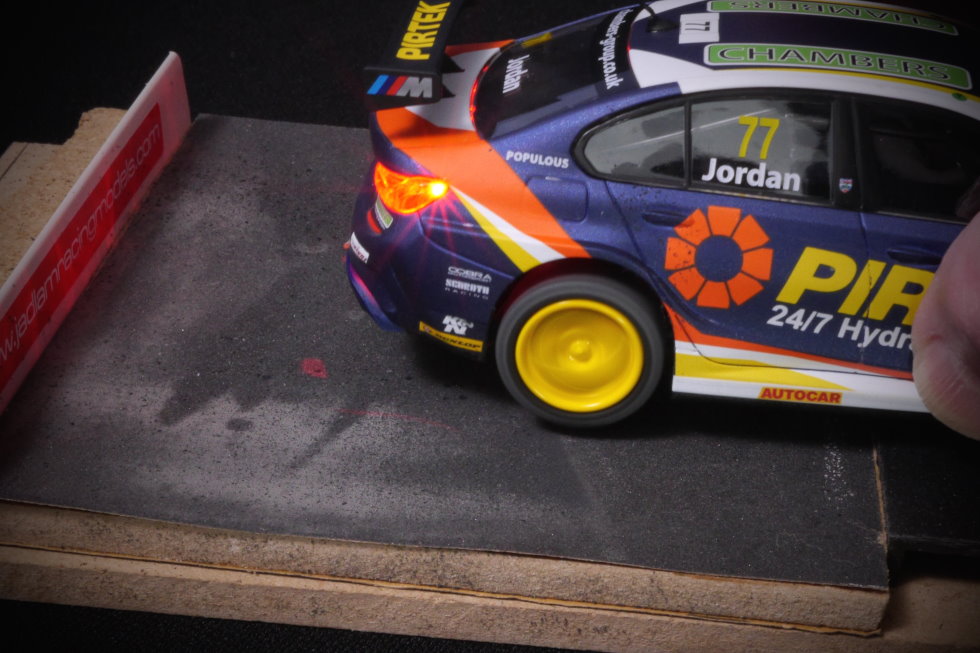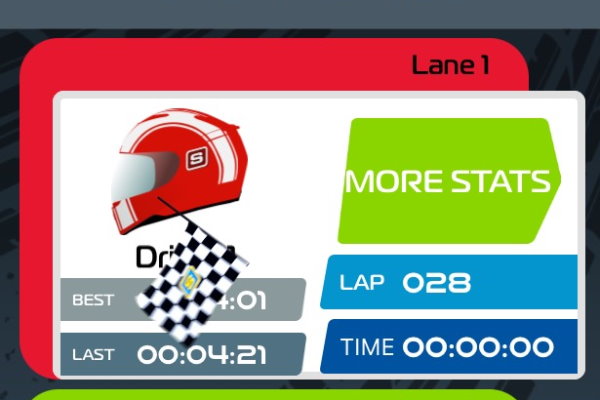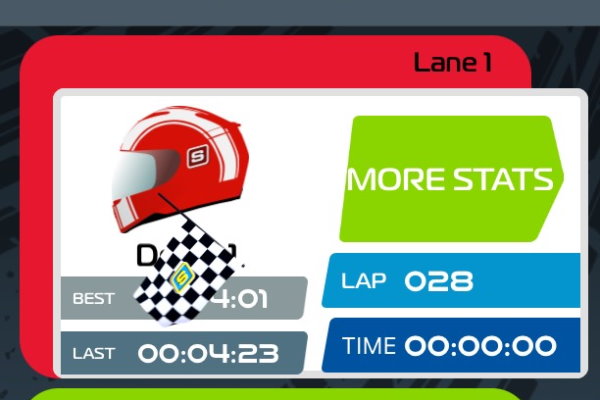The brand new Scalextric BMW 330i arrived right at the end of 2020…
And what a treat for British Touring Car Championship fans, who’d been waiting a long time for a new addition to the Scalextric BTCC range. There have been plenty of new liveries, but the 330i is the first new model since the Civic Type-R, BMW 125i, MG6 and VW Passat were launched back in 2016. The BTCC cars have proved popular in the UK, but simply don’t have the global appeal to justify the regular new models that fans would love to see.
I count myself as a massive fan of the Scalextric BTCC range. The cars make a colourful, high-detail grid and their performance is impressive. The models are brilliant to collect, great fun to race at home and they get raced at slot car clubs too. So let’s see how the new BMW on the block fits in with its predecessors.
But before we do, here’s a reminder that four BMW 330i M-Sport cars will be available this year. The C4194 Andrew Jordan car: https://www.jadlamracingmodels.com/scalextric-slot-car-c4194-bmw-330i-m-sport-btcc-2019-andrew-jordan/, the C4188 Colin Turkington (2019) car: https://www.jadlamracingmodels.com/scalextric-slot-car-c4188-bmw-330i-m-sport-colin-turkington/, the C4165 BMW Police Car: https://www.jadlamracingmodels.com/scalextric-slot-car-c4165-bmw-330i-m-sport-police-car/ and the C4225 Colin Turkington (2020) car: https://www.jadlamracingmodels.com/scalextric-slot-car-c4225-bmw-330i-m-sport-btcc-2020-colin-turkington/
The Real BMW 330i M-Sport
The 330i BTCC racer was unveiled in February 2019 as the successor to the 1 Series 125i M-Sport that had captured the manufacturers’ championship in 2014, 2017 and 2018 – plus the drivers’ title for Colin Turkington in 2014 and 2018. The new car saw a return for the BMW 3 Series, which has a great history in European touring car racing, going way back to the 1970s. The 330i M-Sport road car was new in the showrooms, but the BTCC race car is a completely different beast under the skin – keeping many of the same components as the 125i, including the BTCC-spec 2-litre turbocharged engine and 6-speed sequential gearbox.
Three cars were entered by Team BMW / West Surrey Racing: one for reigning champion Turkington, one for newcomer Tom Oliphant and a third – in Pirtek colours – for 2013 champion Andrew Jordan. Much of the 2019 season was dominated by BMW – Turkington winning five races and Jordan six. A heavy crash in the first race at Donington saw the Pirtek BMW miss the rest of the weekend – and Jordan dropped points that would prove crucial at the end of the season.
Those two Team BMW drivers went into the final race of the final round at Brands Hatch in a three-way championship battle with Honda’s Dan Cammish. On a wet track, championship-leader Cammish was doing just enough. Then a heartbreaking crash gave the BMWs a chance. Jordan finished fourth to tie with Cammish, but Turkington’s sixth place gave him the 2019 BTCC drivers’ crown by two points. It was fantastic drama right to the end.
The Scalextric Model
Andrew Jordan is an exciting racer and a great bloke, so there was no doubt the number 77 Pirtek car was the one I’d get. In its display box, the car looks sensational with the matt/satin metallic finish that’s so popular these days. Then it was time to put the car under the microscope. I was impressed – all the decoration, sponsors logos and details are spot on and in the correct positions. That shouldn’t be a surprise – West Surrey Racing demand perfection when it comes to signing-off models and these Scalextric versions of their 2019 BTCC cars were no exception.
If there is one question mark, it’s the shade of orange paint – some photos suggest a slight darker hue, but in others it’s a very close match. Overall, the decoration is superb and the shape and the stance make a really good-looking scale model.
In comparison to the older BMW 125 (pictured side-by-side above), the Scalextric 330i is longer (by 12mm), wider (1mm on the rear axle width) and is 10g heavier. It’ll be interesting how that impacts on the track performance – that’s certainly what home and club racers want to know. Looks-wise, the new car is more refined – the mouldings are precise and details like the wheels have a much better finish. This BMW 330i will be a highlight of many collections.
The Mechanical Stuff
Inside, the layout of the BMW 330i is very familiar – tray interior, easy-fit guide, inline short can motor, front and rear lights. This was a new layout introduced with the BMW Z4 in 2015 and then the four BTCC models in 2016 and has become the standard for most of the Scalextric ranges. As usual, the BMW’s traction magnet is fitted behind the motor and there is no alternative magnet pocket. The car is also Digital Plug Ready (DPR), meaning it can be easily converted to Scalextric digital using the C8515 Digital Plug or to Carrera Digital132 using the Carson digital conversion chip.
Underneath, there’s a very cool M-Sport cut-out in the underpan, just beneath the motor. The body is attached by three screws – two at the front and one at the back. These were very tight on my car and I will loosen them before I run it. Body float is also constrained in several places – numerous tabs along the sides, by the front splitter (part of the body) and rear valance (part of the underpan). This will need a bit of work to get the body nicely ‘decoupled’ from the underpan. Even so, the BMW looks a good candidate for a Jadlam Scalextric Tuning Series make-over.
On my flat acrylic set-up plate, the front wheels are only just touching the surface and the guide blade sits deep in the slot. That’s great news for front-end stability. The magnetic downforce on my DIY ‘magnet marshal’ was 41g. This compares with 30g for the old BMW 125i and 38g for the benchmark Civic Type-R. The lack of downforce for the older BMW made it the least competitive Scalextric BTCC car. With some magnet tweaks (see here) or running ‘non-mag’ the 125i is a good racer. On paper, the new 330i should be great on track, so let’s see if it is…
Track Performance
Out of the box, my BMW 330i was sensational. The combination of magnet and soft rear tyres gave the car plenty of grip and stability. When that grip was at its limit, the rear stepped out a little, but the slide was easy to control. The low ground clearance certainly helps get the magnet near the rails, but the car did bottom out on the precipitous crest on my flyover. However, when I had the confidence to give the car more throttle over the jump, it was much better. A two-minute timed test on the SL6 track gave the BMW a stupendously good out-of-the-box score of 26 laps and best lap time of 4:36 seconds.
It was then time to tweak the car a little. I realised I hadn’t loosened the body screws properly, so I did that – plus scuffing up the rear tyres and re-profiling the braids. I explained these basic tweaks in my Scalextric Tuning series here: https://blog.jadlamracingmodels.com/2020/11/20/scalextric-tuning-2-tweaking-a-new-car/. The tyres had quite a ridge on the outside edge, so it was a bit more than a scuff – I removed the ridge so the tread surface was pretty flat. Back on the SL6 test track, I felt I could push the car more. A two-minute run gave a superb 28 laps and a best lap of 4:07 seconds – a new track record for a Scalextric car.
Next I gave the new BMW 330i a head-to-head with my older BMW 125i that’s fitted with extra traction magnets – giving it similar downforce to the Civic Type-R (see Tuning part 4: https://blog.jadlamracingmodels.com/2020/12/05/scalextric-tuning-4-magnatraction/). I’ve had the 125i a while – and in addition to the extra button magnets, it has been tuned with the three basic tweaks and is nicely run-in and loosened-up. With the equalised magnetic downforce, it’s a cracking car on a short home track – just like the Honda. In its two-minute test run, the BMW 125i recorded 28 laps and 4:01 best lap. Could the new BMW go better?
These are two quite different cars to drive – the 125i is shorter and really nimble round the mostly Radius2 corners and short straights of the SL6 test track. The Civic Type-R loves those tight turns too. The longer 330i requires more work from the driver, but it is still really quick. I enjoyed the occasional ‘wiggle’ as the rear end stepped out, especially as the tyres picked up a little dust and lost some traction. The wheelbase of the BMW 330i is even longer than the two ‘big & long’ Scalextric BTCC models – the VW Passat and MG6. I enjoy driving those two, but they can be a handful on short, twisty tracks and only come into their own on faster tracks with wider radius corners – just like in real BTCC racing. Despite the longer wheelbase, I’d place the new BMW 330i somewhere between the two pairs of cars in terms of driveability.
So what happened? An eyes-on-stalks full-attack-mode run saw the 330i match the performance of the souped-up 125i – 28 laps and best of 4:01 seconds. It was getting a bit lively by the end, but I managed to keep it on the track. In terms of future tuning, I will focus on the body float – just loosening the screws didn’t do too much. That will also be essential for non-magnet racing, which is how the Scalextric BTCC cars will be run at most slot car clubs. After this test, I’m expecting the new BMW 330i to be the BTCC car to beat when clubs start to return after the pandemic – if it’s this quick round a small, twisty home track, I’m excited by the prospect of it stretching its legs on long, sweeping club layouts.
Scalextric BMW 330i M-Sport ‘BTCC 2019 Andrew Jordan’ Data Sheet
Catalogue code: C4194
Available here: https://www.jadlamracingmodels.com/scalextric-slot-car-c4194-bmw-330i-m-sport-btcc-2019-andrew-jordan/
Range: Scalextric Modern Touring Cars – 1/32 scale / high detail / Digital Plug Ready (DPR)
Released: December 2020
Spares included: 2 x braid plates with braid fitted
Lights: front and rear
Motor: Scalextric ‘short-can’ – inline orientation.
Gear ratio: 9:27
Length: 148mm
Wheelbase: 90mm
Rear axle width: 59mm
Height: 42mm
Weight: 86g
Andy’s downforce gauge: 41g magnetic downforce


